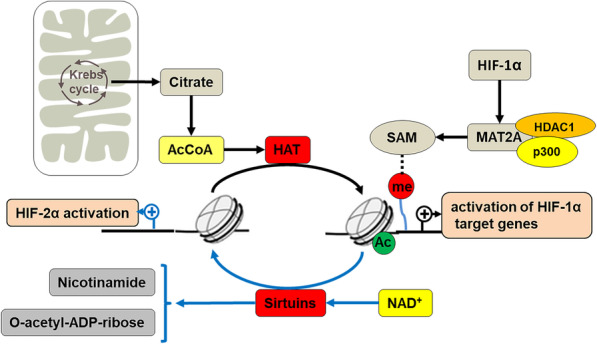Fig. 3.

The epigenetic regulation of acetyl-CoA, NAD+ and SAM on stability of HIF-α. In the tricarboxylic acid cycle of mitochondria, AMPK phosphorylates acetyl-CoA carboxylase (ACC), leading to increased acetyl-CoA in tumor cells. The activity of histone acetylases (HATs) such as p300/CBP, which uses acetyl-CoA as its substrate, is increased accordingly. The acetyl-CoA leads to increased p300/CBP activity, so recruitment of p300/CBP by HIF-1α results in substantial activation of HIF-1 downstream genes. In hypoxic tumors, residual Sirtuins catalyze the deacetylation of histones in NAD+ − dependent reactions to produce a deacetylated substrate, o-acetyl ADP-ribose, and niacinamide. This results in changes in HIF-α and its downstream gene activation. HIF-1α recruits p300 and HDAC1 to the MAT2A promoter, leading to high expression of MAT2A. Up-regulation of MAT2A regulates genomic DNA methylation status by affecting SAM levels
